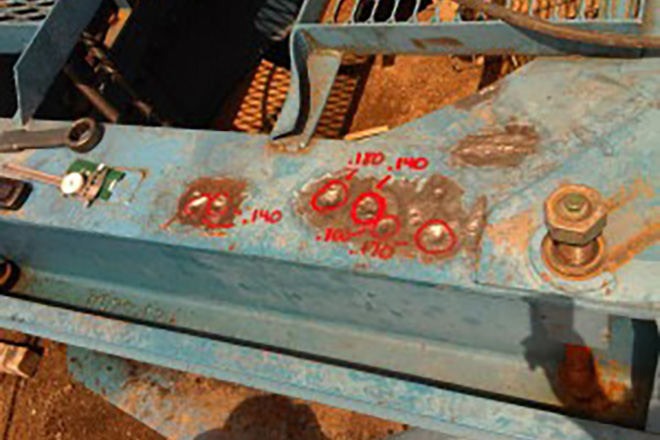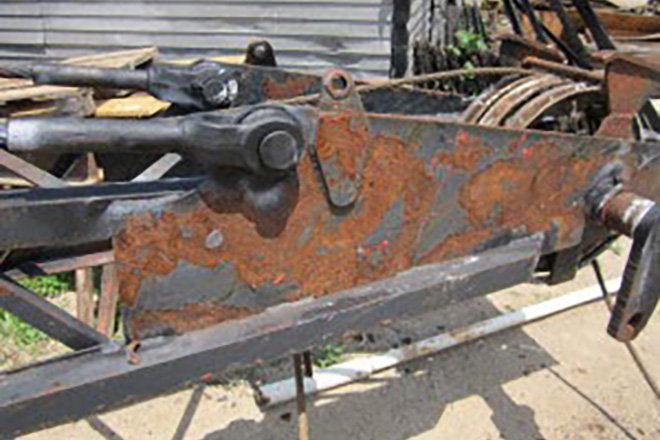The Financial Cost of Rust and Corrosion

Corrosion is a force of nature. It doesn’t care whether your company owns a fleet of cranes or if you have a forklift or two, whichever the scenario, the bottom line is rust and corrosion can have negative impact on your profits by damaging your equipment.
Unlike attention-grabbing natural disasters like flood or fire, corrosion corrupts at a slow and steady pace, and often in hidden places where it can be difficult to detect. In a worst-case scenario, hidden corrosion may not be discovered until a cable suddenly snaps or a pipeline springs a leak.
The Risk of Rust
A recent study estimated that it costs $279 billion per year to combat corrosion and repair or replace corroded components. The study further suggests that the cost of corrosion could be reduced by 25 to 30 percent just by implementing established corrosion control measures.
Several factors affect the rate of corrosion. As an end user, some of these factors are largely beyond your control, such as the material used to build the machine, the component shapes, and the stresses sustained. Other factors may be inherent to the work, such as the job site environment. However, there are still many ways that you can mitigate corrosion and minimize your costs.
Rust Prevention
One simple, cost-effective solution is to use an oxide-resistant coating. Manufacturer’s often use high-performance coatings such as metal spray or polyurethanes, but even these coatings can eventually fail. When maintaining equipment, monitor areas with failed coatings for signs of corrosion and repaint locally to prevent further material loss. When repainting, take the time to remove any rust to increase the life of the paint.
Periodic inspection and recoating is particularly important on critical parts such as lattice boom chords where repair or reinforcement is often difficult or impossible. Excessive corrosion on boom chords can lead to removal of that entire boom section from service, requiring purchase of an expensive replacement section.
Periodically cleaning your machine is another means of minimizing corrosion. Commonly, heavy machinery is used in rough environments throughout the year, be it on dirty construction sites, salt-heavy roads, muddy trails – these can all have a build-up effect which can lead to corrosion.
Despite taking the best measures, unwanted materials can accumulate in hard-to-reach, hidden areas where coating is not applied. Crevices between doubler plates or between double channels in a truck chassis, for example, can trap moisture and are often not coated inside the crevices. If not sealed, these crevices can rust between the plates, occasionally building up scale that can force the plates apart and distort the metal.

Take Preventative Action
Ultimately, careful inspection of the machine is one of the best tools for corrosion protection. Once started, corrosion accelerates as the byproducts get underneath the coating and expose more metal. After the surface is roughened by corrosion, the surface area of the metal increases, giving the atmosphere more metal to work with. Therefore, it’s important to catch any corrosion quickly and fix the situation before it causes a real problem.
One inspection method used to discover corrosion in hidden areas is ultrasonic testing (UT). UT is performed by imparting sound waves into a component and measuring the time it takes them to return. Parts with reduced thickness or parts with internal defects reflect the sound beam sooner, and the resulting signal is interpreted by the inspector. UT is useful for determining remaining thickness due to corrosion, laminations in plates, internal defects in castings and forgings, and weld defects.
In the past, IIA has seen corrosion damage leading to the complete replacement of lattice boom sections, telescopic boom sections, outrigger legs, wire ropes, scissor lift decks, and the whole boom truck chassis. As you can imagine, this can potentially be very expensive. Implementing these few simple measures: periodic visual inspections/recoating, cleaning, and NDT – can potentially save you substantial money in the long-term.
NEED A QUOTE?
Simply fill out your name, number, and email below and someone from our team will contact you within 24 hours.




